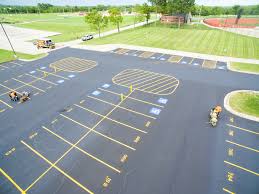ADAguy
REGISTERED
Too true.
Your premier resource for building code knowledge.
This forum remains free to the public thanks to the generous support of our Sawhorse Members and Corporate Sponsors. Their contributions help keep this community thriving and accessible.
Want enhanced access to expert discussions and exclusive features? Learn more about the benefits here.
Ready to upgrade? Log in and upgrade now.
Big box stores where there is a fire lane in front of the store. All of the HC parking spaces you have to travel in the driving aisle to get to the HC parking space of which there could be 6 or more of them
In The picture(4) of those stall do not Meet Code, they lack loading zones. So traveling behind is just another violation for a law suit.I was not referring to the drive aisle I was referring to the other 4 or 5 HC parking spaces a person wouls have to roll behind if they are parked in the farthest HC spot

So is it a violation of a code or just a violation of "best pratices"? If code please provide the section from ANSI or ADASo traveling behind is just another violation for a law suit.
YesThe "Loading zone" is the 5 ft. (or 8 ft. for a van space) aisle between accessible spaces.
Apparently having to travel behind other parked cars is a violation in California, but just bad design elsewhere.
11B-202.4 Path of travel requirements in alterations, additions and structural repairs
When alterations or additions are made to existing buildings or facilities, an accessible path of travel to the specific area of alteration or addition shall be provided.
The primary accessible path of travel shall include:
- A primary entrance to the building or facility,
- Toilet and bathing facilities serving the area,
- Drinking fountains serving the area,
- Public telephones serving the area, and
- Signs.
Chapter 2 Definitions
PATH OF TRAVEL. An identifiable accessible route within an existing site, building or facility by means of which a particular area may be approached, entered and exited, and which connects a particular area with an exterior approach (including sidewalks, streets and parking areas), an entrance to the facility, and other parts of the facility. When alterations, structural repairs or additions are made to existing buildings or facilities, the term “path of travel” also includes the toilet and bathing facilities, telephones, drinking fountains and signs serving the area of work.
